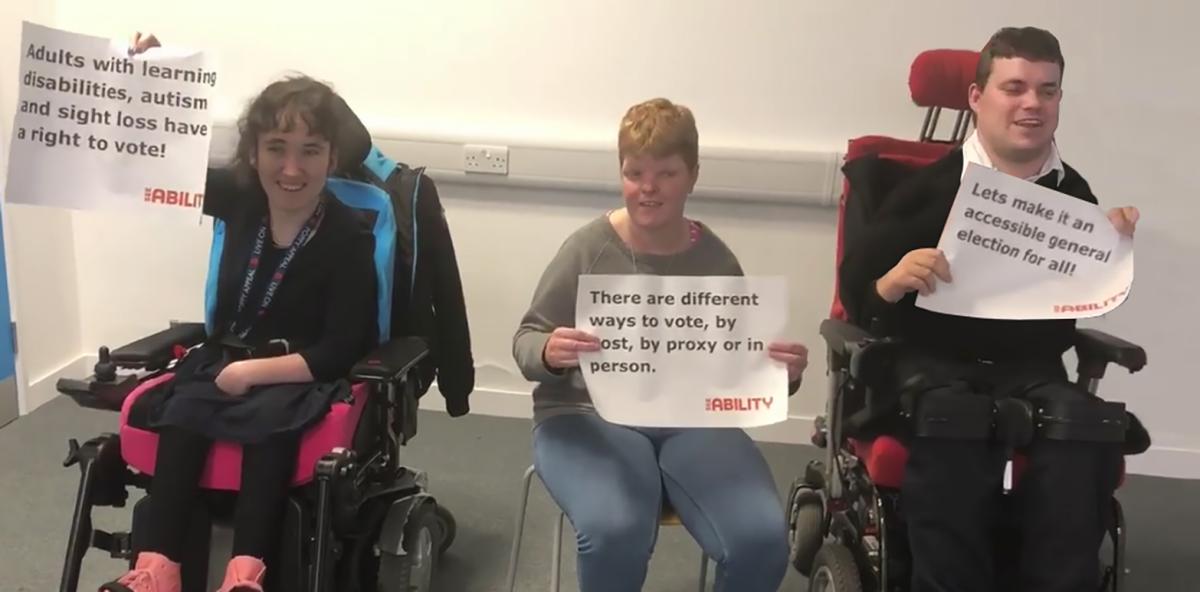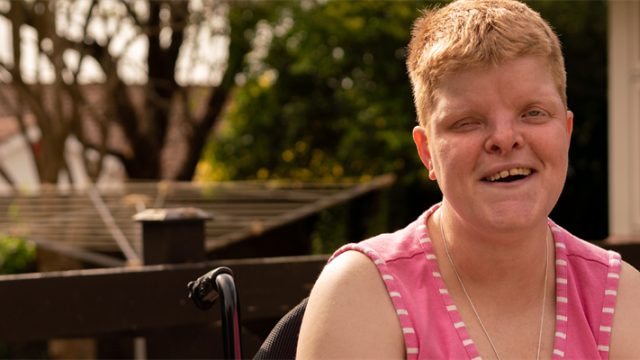
Emily’s balance chart - thriving at work
For many people, the work we do on a daily basis is a means to an end, a way to make money to live. Many would say they live to work rather than the opposite. But everyone deserves to have the career they want, one that brings them daily joy and satisfaction. Having a job we enjoy is an important part of living well and it’s essential to having a good life - this doesn’t have to be paid work, but could instead be volunteering, housework or raising children.
SeeAbility’s influencer Emily is confident that she’s found her ideal job. But because she knows there’s always room for improvement, she’s using the free LifeClubs balance chart to identify how she can live better.
Emily had never had a job before SeeAbility, but she’s always wanted to work. Now she’s been given the opportunity, she’s happy. This is reflected in her balance chart score, which asks her to rate herself from 1 (unhappy) to 10 (very happy). She explains:
“I’m definitely an 8. I get the support I need. If I have any issues, I don’t need to worry because someone can help me. I really like helping other people too, which this job is all about. So, I’m happy.”
Thinking about what it feels like to finally be in paid employment, Emily adds:
“It actually feels really nice. Not only does it give me more money for my craft stuff, it also lets me make a difference. I’m happy with that. I didn’t want a job just for the money.”
A full time worker will spend around a third of their waking hours at work every week. If you’re not happy at work, it can negatively affect your home life too. Polling conducted by YouGov in 2020 found that over half of respondents said that their job affected their overall happiness, with only 9% of people saying it had no impact at all on the rest of their life.
When we were children we’d often be asked about what job we wanted. Whether it was something aspirational like an astronaut or maybe something a lot more realistic, there are likely very few of us who actually got there. Emily says that her plans changed too:
“I wanted to be a receptionist. I wanted to support people in that way, to help them find the information they need. It’s strange how I’ve gone from that to this but I guess it still lets me work with other people.”
Regardless of where you are in your career, be it starting out or nearing the end, it’s never too late or early to change. If you aren’t finding satisfaction or if your job is impacting your health or life, maybe it’s time to consider how your skills can be used in a new role? Or maybe you just need some time away to switch off. Emily says:
“Remember to say when you need time off. Don’t do what I do and think you can do it all. You need to cut yourself some slack. It’s important to have a work life balance.”
Volunteering to help organisations and the causes or people they support might also help you to live better. Thinking about others is a good way to help you understand what you have whilst also supporting them to have a good life too. As a charity, SeeAbility relies on volunteers. Find out more about how you can get involved with volunteering at SeeAbility, or get in touch with an organisation of your choice to offer your help.
Finding happiness at work is crucial to living well - and it is possible! Take small steps to make it better, or if you’re ready, don’t be afraid to try something new. If you have a learning disability or are autistic, our supported employment programme Ready, Willing and Able can support you to find the career you deserve.
Are you happy at work or have you recently made a change to live better? Join the conversation on social media with #LivingWell and #TheBigConversation and share your advice and stories.


